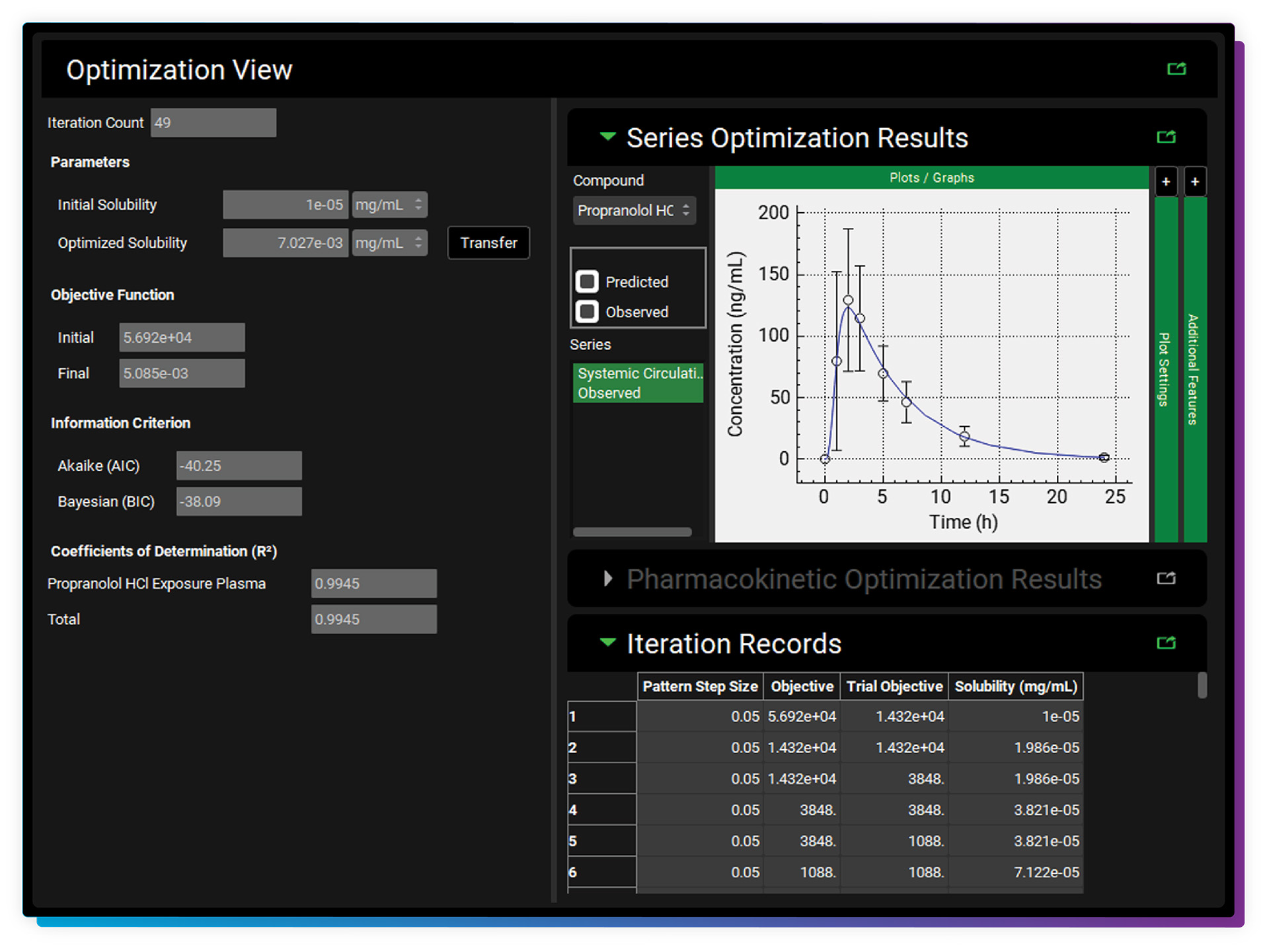One of the most important uses of GastroPlus is to fit absorption, pharmacokinetic, and pharmacodynamic models to observations. In doing so, researchers gain tremendous insight into how their compound is behaving in vivo. When a single set of model parameters can be found that properly describes the observed plasma concentration vs. time profiles for all dose levels, a useful model has been obtained. In general, if the model parameters must be changed for each dose level, then something is not being accounted for correctly. The Optimization Module performs the multidimensional search needed to fit model parameters to one or more data sets automatically.
To automatically fit physicochemical, pharmacokinetic, formulation and/or physiology model parameters to data

